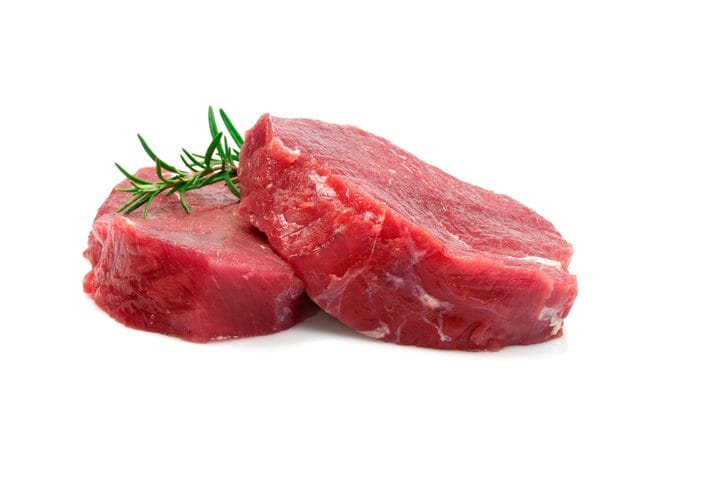An unprecedented nationwide recall of hundreds of top snack products made with flour found to contain undeclared peanut has left many U.S. consumers with food allergies concerned and confused.
The withdrawal on July 9, 2016 of Kroger Deluxe S’mores Ice Cream is the latest in the lengthy recall series that began after peanut residue was found in one type of flour from Grain Craft, a Tennessee-based miller.
Consumers managing severe peanut allergies have been asking how flour came to be tainted with peanut, and why the recalls have continued to roll out since late April 2016, when a few retail bakery chains first recalled a number of cake and cookie products. As well, there are concerns about the safety of the flour supply once this recall saga ends.
In the search for insights into these issues, Allergic Living conducted an investigation, speaking with experts in agriculture, milling and food science.
Genesis of a mass recall
In late April, bakery goods supplier CSM Solutions, a Grain Craft customer, began getting positive peanut tests in some of the affected flour and informed its clients. Retailers including Cinnabon, Safeway, 7-Eleven and Chick-fil-A quickly pulled several cakes and cookies.
On April 30, four days after discovering the intermittent presence of peanut residue and notifying the U.S. Food and Drug Administration (FDA), the wholesale flour supplier Grain Craft informed its customers. It stopped purchasing, milling and distributing the affected soft red winter wheat flour from its mill in South Georgia, a peanut-growing area.
The recalls from several big snack manufacturers that had produced baked goods with the grain, then began on June 3. After two children suffered allergic reactions from eating its donuts, Hostess recalled 710,000 cases of donut and snack cakes that contained the affected flour from Grain Craft.
In the weeks that followed, other major snack manufacturers, including Frito-Lay, Mars Chocolate, Kellogg’s, Armour Snackmakers and Mondelez, withdrew numerous products containing Grain Craft flour that tested positive for low levels of peanut.
How did peanut end up in the affected Grain Craft flour?
This is the big question. Grain Craft says it does not handle or process peanuts, and that peanut exposure could not have happened within its mills.
Based on Allergic Living’s interviews with food science and agricultural experts, it appears the most likely scenario is that cross-contact occurred during transportation. However, how and where that would have occurred has not been established, and the FDA is still investigating.
One source, who asked not to be identified, said he was told that an improperly cleaned rail car transporting peanut meal – high-protein residue from peanut oil production used in animal feed – may have been the root cause of the problem.
There has also been speculation that wheat-peanut crop rotation or farm handling could have led to cross-contact. In June, a Grain Craft spokesperson told Allergic Living that “dust from various crops becomes airborne and can become co-mingled during the growing, harvesting and shipping processes.”
At issue is that crops can be harvested, transported and stored in the same equipment and storage units, making it difficult to keep low-level traces of different crops from mixing together. This so-called “unintended presence” of a secondary food is referred to in the food and agriculture sectors as “co-mingling” or “cross-contact.”
Few experts we spoke to think the peanut “co-mingling” happened during growing. Bob Parker, president of the National Peanut Board, told Allergic Living it is “highly unlikely” that would take place in the field. He notes that peanut and wheat crops grow at different times of year, wheat grows high above the ground, peanuts grow below ground and unique harvesting equipment is used for each crop.
“It’s difficult to speculate, but I’d say the issue occurred somewhere after harvest,” Parker said. “There should be food safety plans in place to prevent such an occurrence.”
In response to queries about regulations regarding crop management and planting to avoid allergen cross-contact, Megan Bensette, an FDA spokesperson, told Allergic Living: “To the best of our knowledge, currently there are no regulations regarding crop management and rotation.”
The agency is still investigating how the wheat flour came into contact with peanut protein, according to Bensette. “Potential possibilities for cross-contamination include raw agricultural commodities being mixed during transportation due to an improperly cleaned rail car or truck, and agricultural co-mingling during harvest due to wheat being planted in a field in which peanuts were previously planted.”
“The agency cannot give a definitive answer until the investigation is concluded,” she said.
Why did it take so long to recall this series of products?
Recalls of products containing peanut-tainted flour – including some products marketed for children – have unfolded over two months, causing some consumers to question why products that might cause allergic reactions are not being removed more quickly. However, tracking products made with the tainted flour can be complicated, particularly when tainted flour is mixed with ingredients from a range of suppliers to make a variety of products.
There may be a domino effect broadening the net around products recalled if a company is a customer of another company, said Steve Taylor, co-director of the Food Allergy Research and Resource Program (FARRP) at the University of Nebraska, where samples from some affected companies have been tested for peanut residue. For example, a company making cheesecakes may use graham cracker crusts made by another manufacturer, which issues a recall. First the graham crackers are recalled, and then the cheesecakes need to be recalled.
 Steve Taylor, co-director of the Food Allergy Research and Resource Program at the University of Nebraska.
Steve Taylor, co-director of the Food Allergy Research and Resource Program at the University of Nebraska. In contrast, in recall cases where obvious and isolated contamination has occurred, a recall would usually take only a matter of days or a week, he said.
Companies would have had to figure out which products might have contained the affected flour, then gather samples of those products and have them tested to see if they contained peanut residues.
Joe Baumert, co-director of FARRP, considers the response from industry swift. The companies involved, worked through risk evaluations, conducted sampling analyses, and tried to figure out the scope of the issue. “They took this very seriously and quickly went to see what the next steps were,” Baumert said.
The analysis period ended up taking from several weeks to a month. “We did a fair bit of that in our laboratory,” Taylor said.
“The crew worked very hard, there were a lot of samples. In an incident like this, the companies aren’t going to send one or two samples, they’re going to send hundreds because they really want to know. They want to make sure that if there’s any peanut there at all they’re going to detect it, and if they test a single sample, that’s not a very profound test.”
Is the end in sight for this mass recall?
Taylor believes this recall series is finally winding down. “To our knowledge Grain Craft doesn’t store this flour, they produce it and ship it,” he said, adding that it is date-stamped.
“It’s either consumed or recalled – this product is gone. I can say that with great confidence. Could there still be another recall? It would have to be someone who didn’t respond very well but should have known to respond earlier,” he says.
Could there be a recurrence of peanut in flour?
To a certain degree, a low level of agricultural cross-contact is a reality of farming practices and cannot be completely avoided, Taylor said. However, he views peanut contamination as an extreme example of agricultural co-mingling.
“Everyone is very concerned about detectable peanut residues in wheat flour; peanut is notorious for causing severe reactions. Although it is important to emphasize that the doses associated with this Grain Craft episode, while worrisome, are unlikely to provoke severe reactions,” he said.
What can be done to improve food transportation safety?
The FDA Food Safety Modernization Act’s newest rule – Sanitary Transportation of Human and Animal Food – took effect on June 6, 2016, and large companies have one year to start complying. The aim of the rule is to protect foods as they are transported from farms to consumers by protecting them from contamination during transportation. The scope of the law with regard to allergy-related guidance is still unclear, but it requires that vehicles must be cleaned between loads.
According to Milling & Baking News, the grain-based foods newspaper, milling companies have already put new grain handling procedures in place in the wake of the Grain Craft situation “to prevent a recurrence of this disruptive event.”
These include prohibiting the delivery of wheat to a flour mill in a railcar or truck that was used to haul peanuts in a previous load. (While Grain Craft wouldn’t confirm it, the newspaper reports that the miller has also added tree nuts to its “prohibited” list.)
Taylor adds that, from the perspective of the food allergy community, there is one bright spot to emerge from the Grain Craft recall situation. He says it highlights that the FDA, as the food industry regulator, needs to think about allergens in the context of transportation. Until now, the real focus and attention has been on bacterial contamination and pathogens.
For product recall specifics, see the FDA’s recalls page here.






